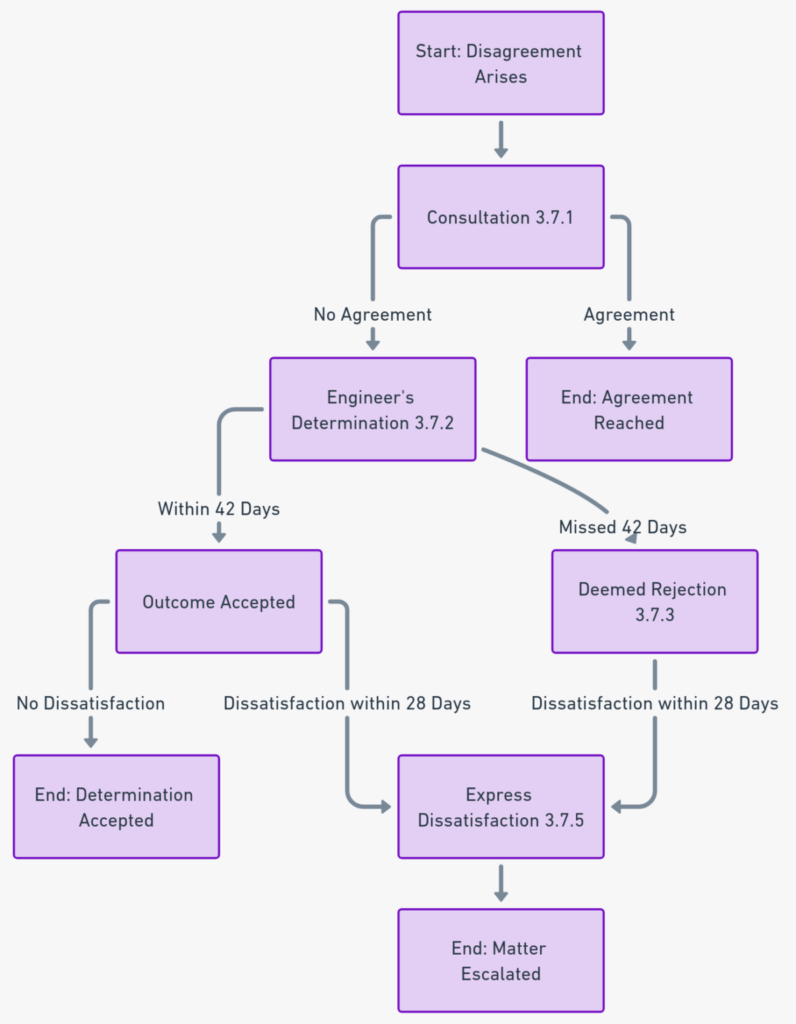Clause 2.2: Assistance in the FIDIC Yellow Book 2017 plays a pivotal role in facilitating the smooth execution of construction contracts. This clause is designed to ensure that the Contractor receives necessary support from the Employer, particularly in navigating legal and regulatory requirements.
Key Components of Clause 2.2
- Legal Document Assistance: The Employer is obligated to assist the Contractor in obtaining copies of relevant laws that are not easily accessible. This is crucial for ensuring compliance with local regulations.
- Permits and Approvals:
- Under Sub-Clause 1.13: The Contractor is responsible for obtaining certain permits as per the compliance requirements. The Employer’s assistance in this process is vital.
- Goods Delivery: Assistance in obtaining permits for the delivery of goods, including customs clearance, is covered.
- Export of Equipment: When the Contractor needs to remove equipment from the site, assistance in exporting this equipment is required.
Implications and Applications
- Streamlining Legal Compliance: This clause helps in simplifying the process of legal compliance for the Contractor, especially in complex jurisdictions like the United States, where building codes and environmental laws are stringent.
- Facilitating Project Flow: By ensuring the Employer assists in obtaining necessary permits, the clause aids in avoiding project delays.
- Risk Management: It reduces the risk of non-compliance with local laws, which can lead to legal complications and financial penalties.
Expert Opinion
- Proactive Approach: Contractors should proactively request assistance under this clause to avoid delays.
- Documentation: Maintaining a record of all assistance provided is crucial for accountability.
- Local Legal Nuances: In the U.S., for instance, understanding the nuances of state-specific building codes and environmental regulations is essential, and the Employer’s assistance can be invaluable here.
Technical Standards and Building Codes
In the context of the United States, Clause 2.2 becomes particularly relevant when dealing with:
- Building Codes: Such as the International Building Code (IBC), which varies across states and municipalities.
- Environmental Laws: Like the National Environmental Policy Act (NEPA), which requires environmental impact assessments for large projects.
Detailed Explanation of Clause 2.2: Assistance in Simple Terms
Clause 2.2: Assistance from the FIDIC Yellow Book 2017 is about the support the Employer must provide to the Contractor. This support is mainly about helping the Contractor understand and follow the local laws and getting necessary permissions for the project. Here’s a breakdown:
- Help with Laws: If the Contractor needs it, the Employer must help them get copies of local laws related to the project, especially if these laws are hard to find.
- Help with Permits and Approvals:
- Compliance with Laws: The Employer should assist in getting permits or approvals the Contractor needs to comply with local laws.
- Goods Delivery: Help is also provided for permits related to delivering goods to the site, including customs clearance.
- Export of Equipment: When the Contractor needs to take their equipment out of the project site, the Employer should assist in getting the necessary export permissions.
Comparison with 1999 Version
The 1999 version of the FIDIC Yellow Book also includes a similar clause, Clause 2.2: Permits, Licences or Approvals. Let’s compare the two:
| Aspect | FIDIC 1999 | FIDIC 2017 |
|---|---|---|
| Title | Permits, Licences or Approvals | Assistance |
| Employer’s Role | Provides reasonable assistance, specifically for obtaining laws and permits/licenses/approvals | Similar, but emphasizes promptness in providing assistance |
| Scope of Assistance | Similar in terms of laws, permits, and licenses | Similar, but with a clearer emphasis on the promptness and reasonableness of the assistance |
| Language and Clarity | Fairly straightforward, but less emphasis on the urgency | More explicit about the promptness and reasonableness of the assistance |
Key Differences:
- Title Change: The title in the 2017 version is more general, indicating a broader scope of assistance.
- Emphasis on Promptness: The 2017 version explicitly mentions that the Employer should provide assistance ‘promptly’, highlighting the importance of timeliness.
- Clarity and Detailing: The 2017 version is more detailed and clear about the expectations from the Employer, especially regarding the nature and speed of the assistance.
Flowchart

Detailed Explanation of the Flowchart
- Start of Analysis: The flowchart begins with the analysis of Clause 2.2, focusing on the assistance required by the Contractor.
- Types of Assistance:
- Legal Document Assistance: This path leads to the Employer providing copies of relevant laws that are not readily available. This is crucial for the Contractor to understand and comply with local regulations.
- Permits and Approvals Assistance: This branch divides into three key areas:
- Compliance with Laws Permits: The Employer assists in obtaining permits required under Sub-Clause 1.13 for legal compliance.
- Goods Delivery Permits: This includes assistance in obtaining permits for the delivery of goods, especially customs clearance.
- Export of Equipment Permits: Here, the Employer helps in getting permissions for exporting the Contractor’s equipment when it’s removed from the site.
- End Goal: The ultimate aim of this clause, as depicted in the flowchart, is to ensure effective project execution by facilitating legal compliance and smooth operational processes.



